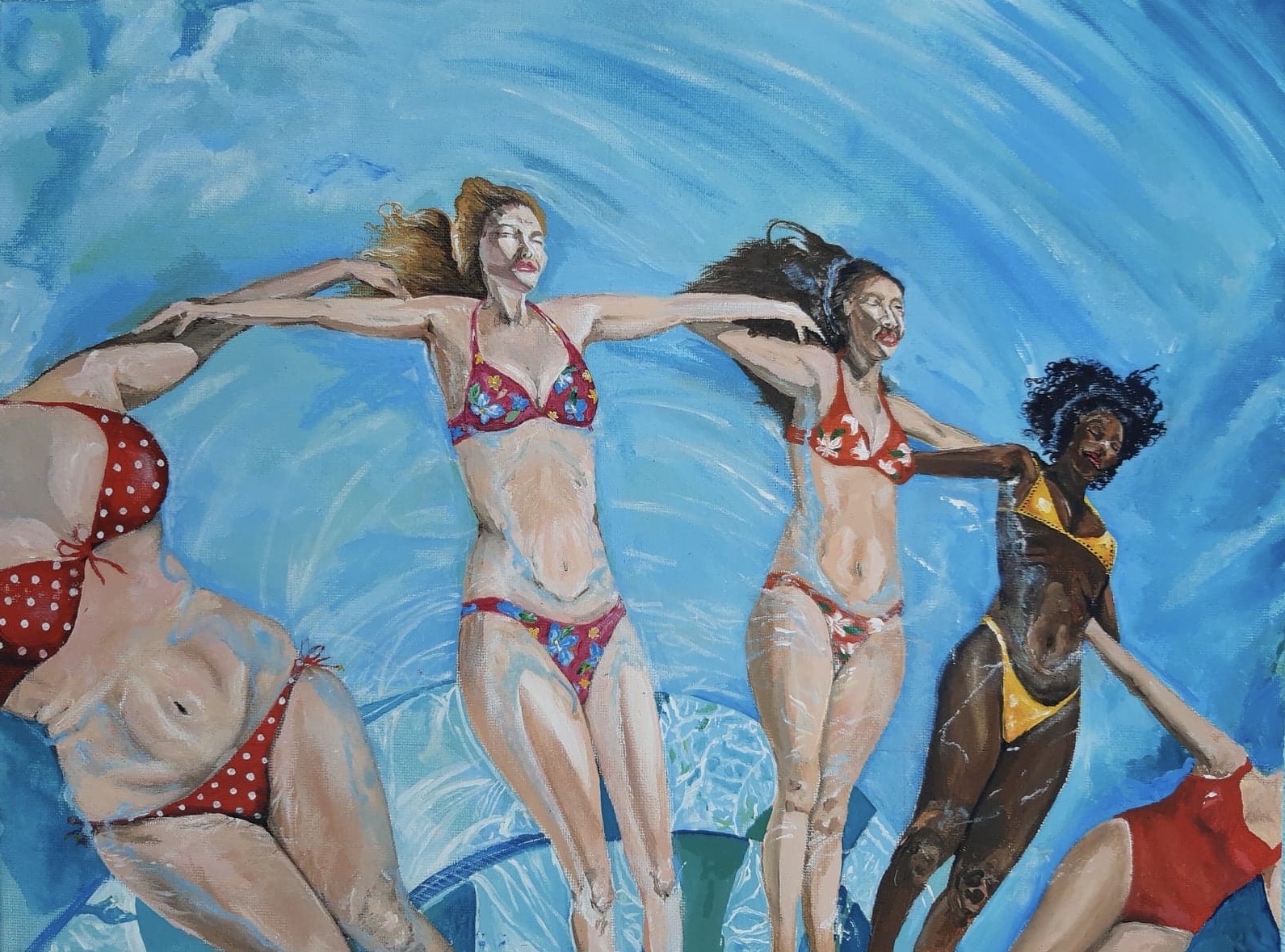
CW – eating disorders
I used to be fatphobic. I struggle to believe that most children weren’t fatphobic. The all-girls school I grew up in was basically a breeding ground for mental illness – its special stock was teaching girls how to thinly veil their borderline eating disorders. The collective desire to wear the one-size-fits-all stores like Brandy Melville, and the shame placed upon individuals who could not fit into the ‘cool’ teenage stores which did not produce plus-size clothes, was unfortunately a trend that I participated in. I have tried, and will continue to try, to unlearn, this prejudice against different body types.
The obesity bias and stigma are hyper-normalised by the media, exclusivity of magazines, and the long-promised myth that one day the ‘baby fat’ would melt away to reveal a slim, and thus attractive, adult. I must state that society does not generally regard me as fat – thus, I am aware, and understand the troubled optics of a slim woman attempting to speak on fatphobia. Hence, please take all my views and research as only opinion-based activism that can only go so far.
Actress and activist Jameela Jamil stated in an interview with the BBC that when she used to be fat-shamed on a national scale, her arguments against fatphobia were undermined by beliefs that she was ‘too lazy to do the work to be slim’ and so she was ‘sounding off about it’. Yet now that she is slim, she has gained more public attention, especially through her interviews with Stylist, as if she was ‘saying brand new ideas that people haven’t been saying for thirty years.’ This illustrates the generally accepted view that people must achieve a certain socially accepted ideal before being able to critique that standard.
In contrast, many body positivity activists are viewed as promoting obesity, or unhealthy lifestyles, for example: Virgie Tovar a self-proclaimed fat activist and recovering dieter, advocates hate loss over weight loss in her TED talk, yet the video yields less that 1k likes and nearly 7k dislikes. Similarly, one would struggle to find positive comments amongst the mountain of anger against Tovar’s view that one should be able to eat as they wish – examples include: ‘she is gym motivation’, ‘thank you for inspiring me to continue with my diet, by not wanting to be like you’, ‘thin privilege is living past the age of 40’, and ‘meth addicts also tend to have less access to meaningful participation in society, put the fork down.’
The normalisation of fatphobia leads many to believe that this verbal online abuse is not discrimination nor bullying, but rather tough love that will help people to lose weight. It is true that this may cause them to lose weight as fat shaming, which is especially prevalent in this social-media era, is increasing the rise of eating disorders and devastating people psychologically. The epidemic of eating disorders originated in the 1920s when society began to view thinness as a sign that someone who is self-disciplined, hard-working, and self-aware in contrast to the former view of skinniness as a negative feature displaying poverty and laziness. This was only exacerbated by the idolisation of size 0 models in 90s, quotes such as ‘nothing tastes as good as skinny feels’ and the unironic use of the term ‘heroin chic’ sent a message to young teenagers that it was okay to starve yourself, or purge, or use laxatives in order to look like this desired body type. In the present day, celebrities and influencers promote miracle diet products – a multi-million advertising scheme only recently banned by Instagram.
The stigmatisation of obesity, and thus unhealthy aspirations for thinness, begins in children as young as three who told scientists studying the phenomenon at the news agency Reuters that overweight people are ‘mean, stupid, ugly.’ The agency also conducted a poll asking people what they blamed obesity on. Over 60 percent of people polled said that the reason why some individuals are obese is due to ‘personal choices about exercising and eating.’ Participants in this poll were not given any information about a hypothetical person’s medical or psychological reasons for being overweight – thus illustrating the normalised belief of fatphobia.
Even the introduction of plus-size models into both high, and commercial fashion can be called a façade of inclusivity orchestrated by the fashion industry – only accepting the palatable version of a ‘curve’ model: an hourglass shape with a toned stomach. ‘They want fat, but not too fat’ explains Abby Russel, a size 16 who is a regular model on ITV’s Lorraine. The underrepresentation of reality – belly rolls, cellulite, stretch marks – only encourages the view that there is only one accepted image of a plus-size person who can be regarded as beautiful. It is clear that the industry has made progress, yet our diverse society still requires more.
For Cherwell, maintaining editorial independence is vital. We are run entirely by and for students. To ensure independence, we receive no funding from the University and are reliant on obtaining other income, such as advertisements. Due to the current global situation, such sources are being limited significantly and we anticipate a tough time ahead – for us and fellow student journalists across the country.
So, if you can, please consider donating. We really appreciate any support you’re able to provide; it’ll all go towards helping with our running costs. Even if you can't support us monetarily, please consider sharing articles with friends, families, colleagues - it all helps!
Thank you!



